Last week, we began a fascinating discussion with LUKAS KENDALL, who, after raising $31,000 in an Indiegogo campaign a year ago, set out to direct a short sci-fi film that he wrote himself: SKY FIGHTER. The 15-minute vignetter story is part of an expansive full-length feature film which Lukas will be pitching to production studios. Sky Fighter will serve as a proof of concept to illustrate not only what the completed film could look like but also how competent of a director Lukas can be.
As a first-time director, studios might be more willing to buy his script and give it to someone else to direct, and Lukas doesn’t want that. This is his dream, and he is going all out to turn it into a reality.
Although the film was just completed a few weeks ago, it hasn’t yet been shared with the general public because that would disqualify Sky Fighter from consideration in most film festivals. However, backers to the original campaign were given a password-protected private link to a screening copy, and those wishing to donate to a new campaign (to fund a Blu-ray and music CD) will also be given special access to the completed film…and it is absolutely worth checking out! Here is the trailer…
A donation as low as $5 gets you immediate access to the backer-only link—and donating a little more gets you other cool stuff…
https://www.indiegogo.com/projects/sky-fighter-sci-fi-short-film-blu-ray-release
And now, the conclusion of our deep-dive interview with Lukas Kendall…
JONATHAN – Let’s move on to the production phase. What was it like shooting this film? How many days were required to get the 14 and a half minutes of footage that went into the finished film? What were some of the biggest challenges you ran into?
LUKAS – We shot for two days in the spaceship over a weekend last August (so you get two days of rentals for the price of one). The outdoor footage was a third morning, a few weeks later.
The biggest challenge for me was simply doing it—translating what was in my head to the physical world, and giving people useful direction in a positive, productive way. I had all kinds of theories about what would work, for this story in particular, and to be a director in general.
I was lucky in that Dan is such a strong D.P., he could cover for my inexperience—I’m not embarrassed to say that. His skill setting up the shots let me focus on the actors and performance. What you see and hear on-screen is the sci-fi—aliens, cybernetic, memory implants—but what you feel is the relationship between the characters. I told the actors, “Think of this like a marriage. You care about each other, but you’re in conflict.” That way, when they fight, it’s not movie fighting—it’s like domestic violence, which is very disturbing. So we worked hard to make the blocking (staging), body language, and line readings all track the ups and downs of their relationship. And I think that’s what makes the show work. You’re extracting relatable human behavior from the sci-fi machinations.
As the director, you have to make sure you have the pieces to tell the story. You cannot move on if you’re not ready to—even when there’s a lot of pressure. The story’s in your head (especially in my case, being the screenwriter), so it’s your job to decide when you’ve gotten the moment. Everybody else might be grumbling, “Why is he still making them do this?” And if a scene takes too long to shoot, you may have to make up time later. But you have to be diligent and just say, “No, I’m not going to finish this shot before lunch—this isn’t an ego trip, this is the movie.”
Directing is exhausting because it’s constant decision-making and judgment calls. Sometimes you have to upset people when you don’t accept their suggestions and they don’t feel appreciated. So I’m pretty sure I went through what all directors go through—maybe more so because I was a first-timer and self-financing, to boot.
JONATHAN – How large was your production crew during filming? In other words, how many people besides the actors were on the set, what were their titles, and what did they each actually do?
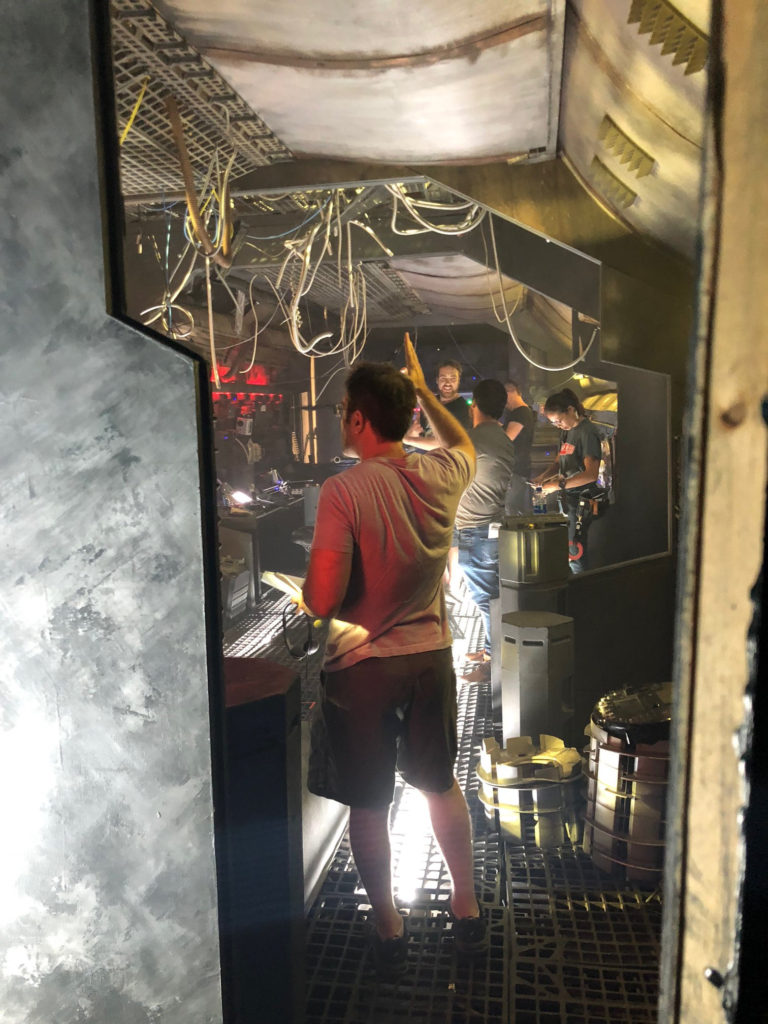
LUKAS – I’ll tell you the truth…I’m not even sure. There’s the camera team, the production designer’s team, the sound recordist, the script supervisor, the VFX supervisor, the assistant director, costume and makeup, the line producer…I’d have to count them from the credits. It was definitely on the small side. When you’re the director, you’re like the guest conductor of this amazing orchestra—but you don’t know how to play an instrument yourself. It’s a mystery how the music happens. But it’s actually not a good use of time to learn the details—that’s their job. Your job is to be the conductor—to lead them in playing the music (telling the story).
And in my case, I also was the composer (writer), and only I really knew what this thing was supposed to sound like. It was a kind of funny dynamic. I would ask people, “How do you think it’s going?” and they’re like, “I don’t know”—because they’re just watching their specific area. One person can tell you if it was in focus, another can tell you if the sound was clean, another can confirm that the set looked good. But only you can decide if it was the right balance of emotions, let alone how it fits into the overall story. So as much as you want and need the validation of other people, you just have to plow through and trust your judgment.
JONATHAN – And finally, there’s post-production. For your film, that meant visual FX, sound effects and mixing, editing, and the musical score. Did I forget anything?
LUKAS – There are also the titles, which were done by my longtime art director at Film Score Monthly, Joe Sikoryak. I asked for blue on black text, like my favorite early 1980s sci-fi films, particularly Star Trek II: The Wrath of Khan. (The opening card is in homage to that film.)
JONATHAN – Yeah, I noticed that…
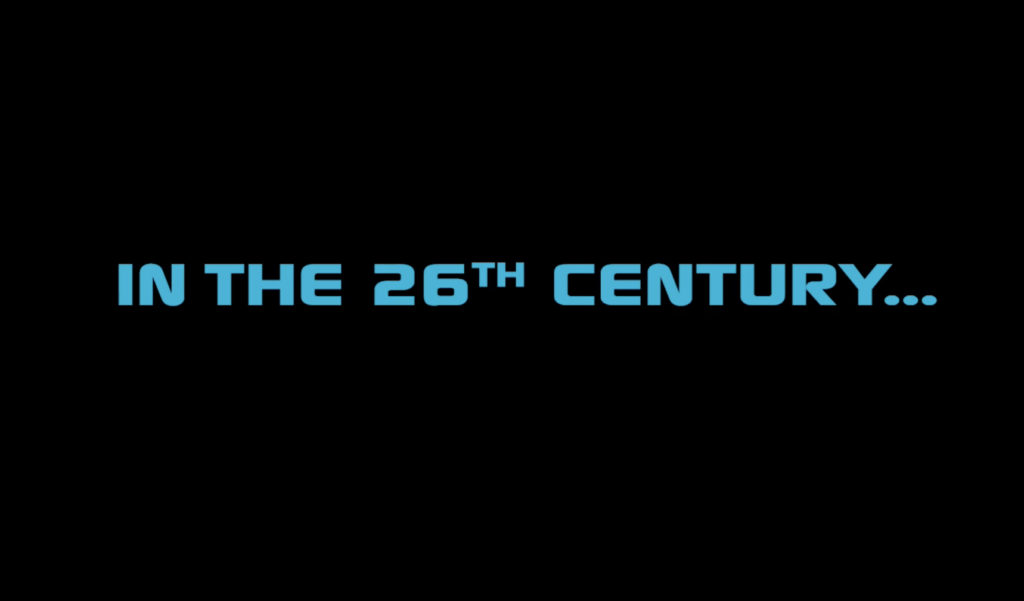
Now, when it comes to CGI, you hired one of the best: Tobias Richter and his company The Light Works. Initially, Tobias was only supposed to do one long outer space tracking shot (which turned out breathtakingly, I must say!). But then you needed to bring him in to do the rest of the interior VFX (which were also amazing), as well…as those were really essential to telling the story properly. Why didn’t you just hire Tobias for everything in the first place?
LUKAS – We needed an on-set VFX supervisor to make sure the shots with holograms were properly set up, and I didn’t think I could afford flying in Tobias from Germany. There was a vendor stateside the producers had worked with, and he came in to supervise and did a good job. He was going to animate the holograms—but I preposterously underestimated the number and complexity of the hologram shots. We thought he’d do maybe a few dozen shots but, once we cut the film together, we realized we needed more like a hundred. It exceeded the time he had scheduled, let alone the budget—so that’s when I moved the entire show to The Light Works.
I had already worked with Tobias by then on the outer space shot and really enjoyed it. Tobias and I have never met, never even spoken on the phone. We work by email. I would make sketches and storyboards, and mark-up print-outs of screen caps. Our emphasis was in clarity of storytelling—the holograms have to be crystal clear for the movie to be comprehensible. We probably passed up opportunities to do more “razzle-dazzle” in order to make the designs simpler, so the audience could process the information. You really don’t appreciate how much thought goes into these shots until you are working on them yourself. Tobias and his team are wonderful collaborators and great artists—but everybody reading this knows that!
JONATHAN – Music was another area where you had to change personnel. The score you ultimately got was perfect and some of the best music I’ve heard for a crowd-funded film. But what was wrong with the first guy?
LUKAS – Thank you for your nice words about the music! The composer is Bobby Villarreal, and he did a fantastic synth score. I figured the set has a retro ’80s look to it, so let’s do an ’80s throwback synth score. He was totally down for that.
What happened was that Ron Jones (Star Trek: The Next Generation, Family Guy) was going to do the score. I have been a fan of his for 30 years, and he very generously let me use his name in last year’s Indiegogo. But he and I were sort of snake-bit by logistical difficulties. He lives north of Seattle, where he has his own, custom-built studio…but I’m in Los Angeles with small kids and can’t easily travel.
Unfortunately—and this is my fault—I miscalculated my desire for directorial input. I told Ron, “Do what you think is best.” Then when he did demos of what that was, I realized, “Oh no, that’s not what I want.” I’m not saying I was right or wrong—but it’s my movie and my prerogative.
So he was like, “Okay, then, tell me what you want,” and I started to—but it was just unworkable. Even if we had suffered through it, I would have needed to be at his studio in Washington—and I couldn’t be. By then, we had already burned through most of the time he had allotted for the project, so we just pulled the plug. He was very gracious, and the donors have been very gracious in accepting my explanation.
I found Bobby Villarreal through one of the film composer management companies, and really liked his demo and enthusiasm. He’s local, so we could work together the way you need to for a project like this. Synth scores are harder than orchestral scores because you have to invent the sounds you want—an orchestra you can take for granted, but a synth ensemble you build from scratch. So I would sit there in Bobby’s studio, and we would go through his sounds and build our palette.
Also, I don’t use temp tracks (a temporary score made of other music). Temp tracks are like zombie scores, they “eat your brains” because you get used to them and stop being creative. I was kind of like a human temp track, narrating to Bobby each point I wanted the music to make—but giving latitude for him to express himself. I like to give a lot of input: this is my field, I know film music and I am musically trained.
Bobby and I would talk about scales and chords and intervals and put our heads together to crack this thing. He used some very sophisticated compositional tricks and scales to nail the “space” genre, while boiling down the themes to their simplest essence—which is really advanced film scoring. We wanted to be bold, to use the score to misdirect the audience as to where the threat was coming from. However, my favorite music is the flashback cue, which is gorgeous and easily the most subtle piece. That was his demo to get the job—I love it!
JONATHAN – And saving the best for last, editor Robert Meyer Burnett truly outdid himself! When folks finally see this, they are going to be bowled over by the quality of the editing and how seamlessly it works to tell the story. What was your process as director in working with Rob? Were you hands-on or hands-off? Were there places where you just couldn’t agree on something, and if so, who got to win the argument?

LUKAS – Rob is a really accomplished picture editor—as your audience knows. The subtleties of marrying shot to shot, and what will cut and what won’t—he’s a master of those details, and of the software and technology. We used all kinds of tricks: blowing up shots, flopping them, running them in reverse, even grabbing a focus pull before the slate. He’s also tireless—he’ll work around the clock, out of passion.
I was pretty hands-on because it’s my nature—and because I had to be. For one thing, we had a ton of coverage, and there were so many different choices of performance, I had to go through and tell him which takes I liked. That’s normal directorial input, by the way.
The other thing is that, remember, those holograms didn’t exist. We had dozens of shots where it’s just an empty plate—and we’d put in a slugline, “Bad guy blows up.” Those holograms were only in my head—and they would drive the storytelling, so I had to make rough road maps of edits (or “paper cuts,” as they’re called) for Rob to use as a starting point. Otherwise, it’s like asking him to do a jigsaw puzzle without showing him the picture on the box.
You asked about arguments…I don’t remember a single one. Rob has no ego whatsoever when it comes to the edit. It’s not “his” edit or mine—it’s ours. He’s there to serve the film and the director. If I had a suggestion and it was a good one, he’d be like, “That’s awesome!” And if it was not a good one, he’d say, “Dude…I don’t think that’s going to cut,” and we’d try it, and usually he was right. But, if I was right and it did work—“That’s awesome!”
I’ll brag about one thing. When we put in the “empty” hologram shots, we had to guess as to how long to make them—given that Tobias’ holograms didn’t yet exist. It would be a nightmare if they all ended up changing—becoming longer or shorter, swapping locations. But in the end, we only had to alter maybe four or five of them. I think that’s a testament to how strong Rob’s work was and how well Tobias did the VFX.
Rob is so enthusiastic and positive, it’s so much fun to work with him. And he’s a great publicist, talking up the project on the Internet and being rightfully proud of it!
JONATHAN – You’ve stated that you can’t release Sky Fighter onto the Internet (except as a password-protected exclusive to donors) because that will disqualify it from consideration in film festivals. How long does that “moratorium” need to last, and when will the rest of the (non-donor) fan community have a chance to see this film?
LUKAS – I don’t know, sorry to say. I haven’t had a film on the festival circuit before. But it will run its course, eventually—and I promise to keep people apprised.
Jonathan, thank you so much for covering the film. I appreciate that it’s a little bit outside your area. It’s not a fan film, although as we discussed last year, it is a movie made by fans. I know some people must be like, “What do I care about financing this guy’s directing reel?” I totally respect that. But now that people are starting to see it and like it, I think they’re getting that it’s right in their wheelhouse. I also want to be the kind of creator who listens to fans, delivers on promises and is worthy of their support. I’m really grateful to the donors for the opportunity to realize my dreams. Thank you!


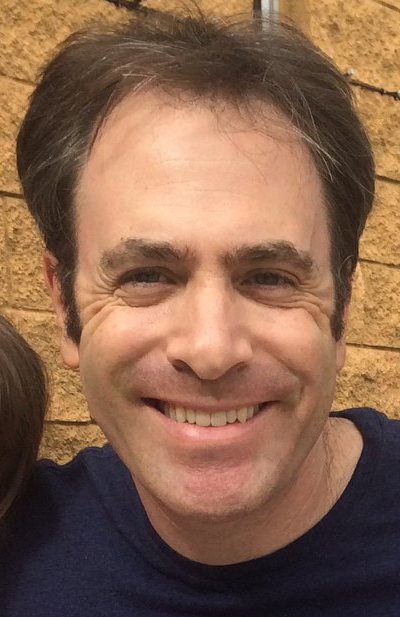

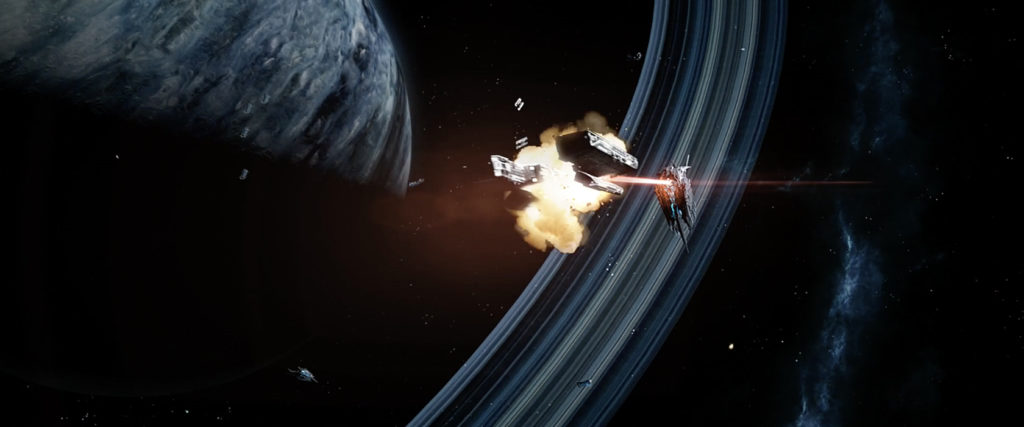

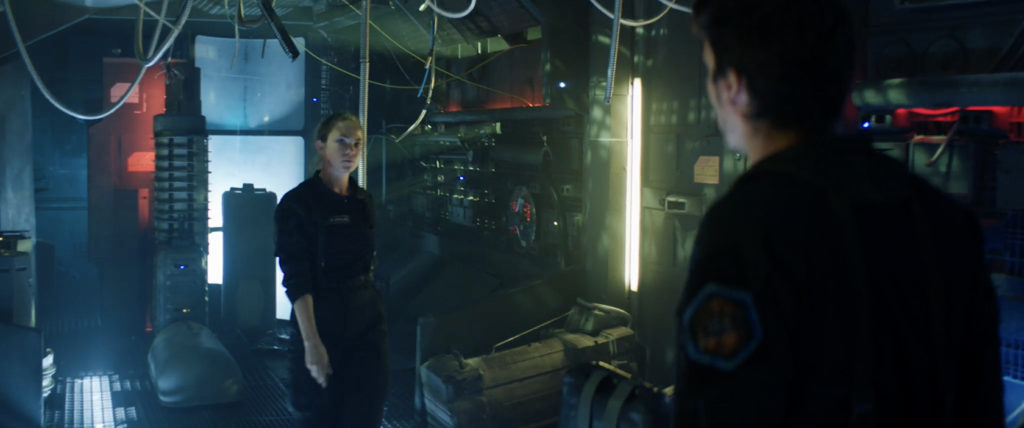
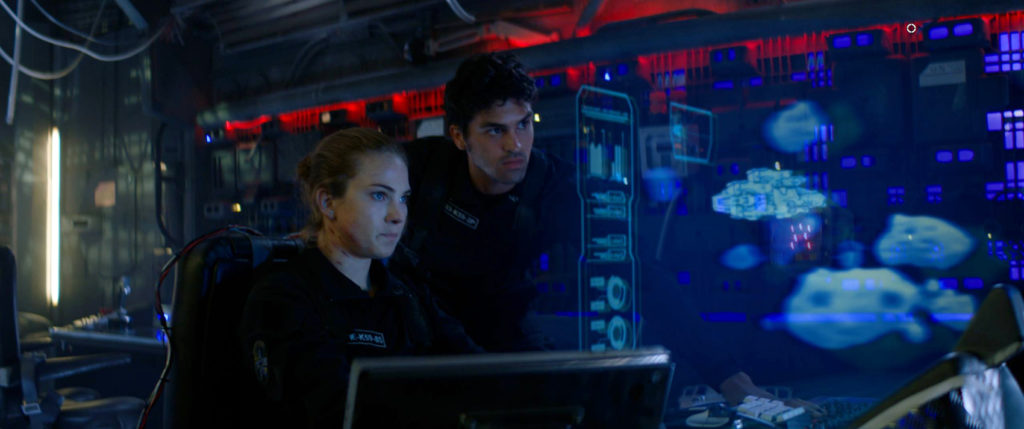
Looks promising.
Wait’ll you see it when it goes public. It’s really awesome!